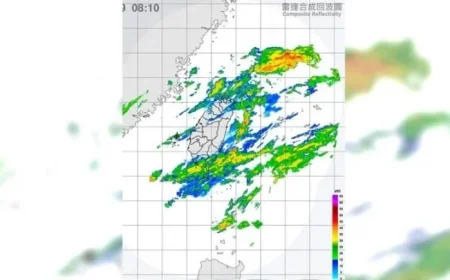Northern Lights in Indiana: Where and When to View on Nov. 11

The northern lights, a stunning natural phenomenon, may grace the skies of Indiana on November 11, 2025. This event follows the detection of two powerful coronal mass ejections (CMEs) traveling towards Earth at astonishing speeds of 3-4 million mph. The NOAA’s Space Weather Prediction Center has indicated that these conditions could allow viewing of the auroras as far south as Indiana.
Where to View the Northern Lights in Indiana
- Beverly Shores (near Gary) – An International Dark Sky location ideal for viewing.
- Kemil Beach at Indiana Dunes State Park – Another excellent spot with reduced light pollution.
- Dr. T.K. Lawless County Park (Michigan) – Close to Indiana and also designated as a dark sky site.
Potential Viewing States
According to the NOAA aurora forecast map, several states have been identified as potential viewing sites for the northern lights on November 11. These include:
- Alaska
- North Dakota
- Minnesota
- Montana
- Wisconsin
- Michigan
- Maine
- South Dakota
- Idaho
- Vermont
- Washington
- New Hampshire
- Wyoming
- New York
- Iowa
- Massachusetts
- Pennsylvania
- Nebraska
- Ohio
- Illinois
- Indiana
Optimal Times for Viewing
The best time to witness the northern lights typically occurs between 10 p.m. EST and 1 a.m. on November 11. As atmospheric conditions may vary, it’s critical to check nearby weather updates.
Weather Forecast for Central Indiana
Meteorologists predict that Central Indiana will experience mostly cloudy skies on the night of November 11. However, conditions are expected to clear over the evening, providing opportunities for stargazers.
– Temperature: Approximately 34°F
– Wind: West-southwest winds at 10-15 mph, gusting up to 28 mph.
Given these weather conditions, viewers are encouraged to dress warmly while seeking dark areas away from city lights for optimal viewing.
Understanding Solar Storms and Aurora Predictions
Predicting auroral activity remains a complex challenge. Solar storms release charged particles that interact with Earth’s magnetic field, forming the vibrant colors of the auroras. Experts rely on solar observations, often approached with varied accuracy just days or hours ahead of the events.
For those keen on experiencing the spectacle, taking steps to ensure visibility can significantly enhance the experience. Seek areas with minimal light pollution and monitor space weather conditions for the best chances of seeing this mesmerizing phenomenon.





























